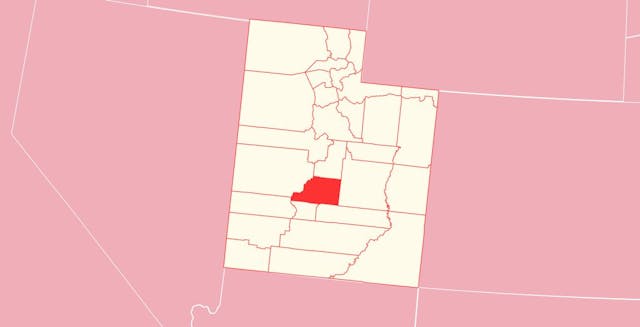Rehabs in Sevier
Sevier County located in the state of Utah had 22,000 population as of the census 2020 which is 2000 more than in 2010․ The territory is small and occupies a 4,968 km² area. The county seat is Richfield.
According to the statistics, Utah has the sixth highest drug and alcohol overdose rate in the USA. During the last 7 years, this epidemic has taken 19,324 lives in the state. Being a part of that community, Sevier, like other regions, also faces the challenges of addiction. Moreover, crimes and death cases related to this disaster continue to increase.
Surely, it is difficult to stop the spread of this issue when most addicts don’t refer to specialists for proper care. We should remember that by receiving treatment under medical control, we protect not only ourselves but also our surroundings. Besides, in this way, we help the government to fight this pandemic.
Everyday growing needs of residents have led to the opening of many recovery centers. Rehabs in Sevier County, Utah offer quality and customer-centered services for all. There your health will be in safe hands.
Drug and Alcohol Evaluation in Sevier, UT
Indeed, we can choose an appropriate cure program only after knowing the addict’s organism's demands. Initial evaluation before the primary cure aims to find out the patient's needs in partnership with the patient himself. The counselor tries to collect maximum information from the client about his disease history. In general, evaluation is conducted in two phases:
Standard assessment to reveal symptoms and measure the stage of addiction
An interview that consists of some questions about toxin type, use intensity, and length
The goal is to better understand a person’s mental state and the effects of co-occurring disorders
Then, based on the assessment results, the physician collaborates with the client to decide on a healing plan.
CUCC center provides accurate assessment and case management in its various locations. State-funded Medicaid insurance is acceptable here.
Detox in Sevier, UT
“I’ve passed the evaluation, and now, where to begin, and what should be my next step?” Maybe, all addicts at least once have asked this question to the doctor. The answer is to detox our body from harmful toxins. In other words, it protects us from setbacks, such as:
Nausea
Headache
Pain in muscles
Loss of appetite
Aggressive attitude
Dependency on painkillers
Sleeping disorders, etc.
Detox mainly involves medication-based care. However, in contrast to self-medication, in the clinic, you will take only the right medicine.
Inpatient and Outpatient Treatment
What do residential and outpatient care plans include and what is the main difference between them? These two types of treatment share the same therapies and procedures, like:
12-step program
Meditation and yoga
Music and art therapies
Fitness
Swimming
Group meetings with other addicts who successfully passed their sober journeys
Horse riding
Massage
Outdoor walking, etc.
Meanwhile, the duration and frequency of procedures vary. 24/7 inpatient care is suitable for severe cases. It may last 1-3 months depending on many factors, such as:
Provider
Patient’s health state, willingness, and organism reaction to medicine
Correctly chosen methods
Atmosphere
If you need a proper cure but the situation is not extreme, partial hospitalization is the best way. However, it can take from several weeks to months or even more. Thus, every day you participate in a 5-8 hour session and go home to relax and spend your free time. After this, when symptoms are minimal you continue to get further care while visiting a clinic 2-3 times a week. And this is outpatient treatment.
Payment in Rehabs
Recovery centers like other clinics, above all, accept private insurance. If you don’t have it you may benefit from a sliding scale fee. So, you get essential services with discounts depending on your income and family size.
Medicaid and Medicare are obtainable options for those who don’t earn much money to cover big costs. Free hospitals are also a good idea in those cases. But, to enter such hospitals you must qualify for the requirements.

